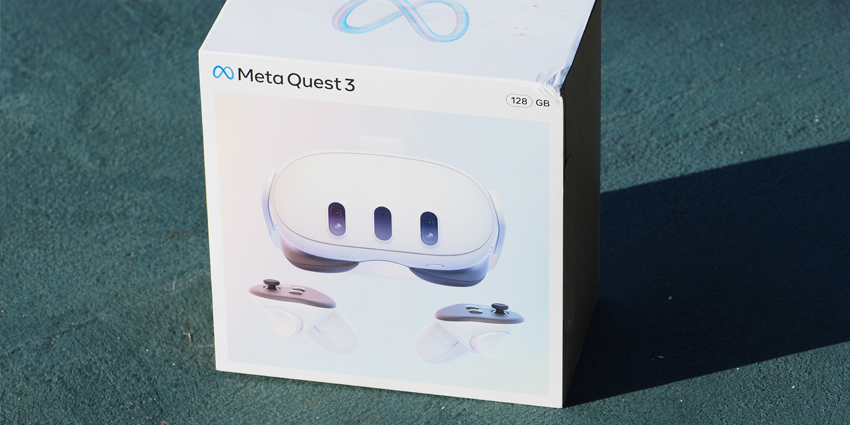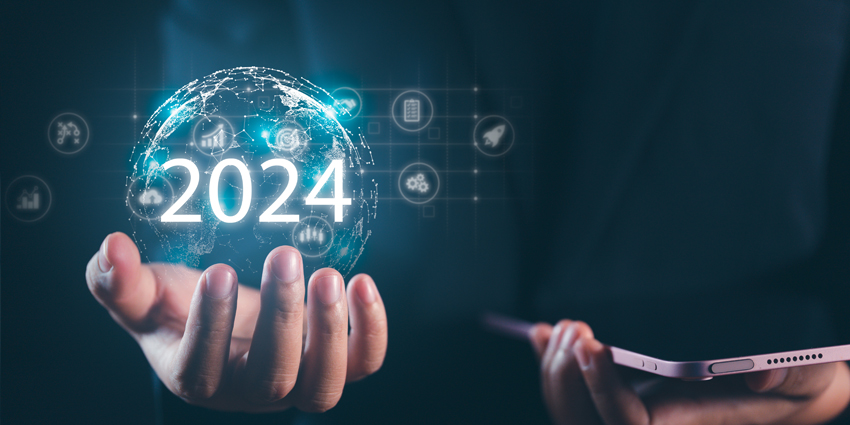February 2024 is here, and this month marked the end of a long, long wait for Apple’s Vision Pro. Upon its debut, the device took social media by storm, creating buzz and funny moments for worldwide audiences – many of whom cannot access the designer tech device.
However, the optics are positive for now in terms of enterprise and consumer XR markets. While first adopter skeptics exist and the device is far from perfect, the optics are generally positive and excited.
These feelings trickle down to broader firms and end-users in the market, as mainstream success and exposure bring XR closer to tangible use case deployment and future ubiquity.
To speak on the countless major firms joining the XR space race is a lineup of industry-leading minds, including:
- Jay Latta, Speaker and Founder of The Fusionists
- Kevin O’Donovan, Co-Chair VRARA Industrial Metaverse & Digital Twin Committee, VRARA
- Laetitia Bochud, Director, Virtual Switzerland
Apple Vision Pro Takes the World by Storm
There’s a lot of enterprise-conversation around the Apple Vision Pro hitting the market. Microsoft and Zoom have also released their respective apps into the Vision Pro this week. With price tag of the Vision Pro is $3,500, without a carry case that costs $200, it’s pretty expensive compared to the Quest, so it’ll be interesting to see where the Vision Pro is heading.
Apple has already sold 200,000 devices in the first week, which is impressive. The question is whether this price point suits the marketplace and is sustainable.
Kevin noted:
I’ll give Apple great credit, they’ve brought this whole topic back into the public perception in a way that many other companies couldn’t. It’s fascinating in my world and the amount of people in industry and manufacturing in oil and gas that may not have ordered one because they’re in the US, but they all went to try it. This has peaked the interest. The danger is, that people go, I’d thought it’ll be better and then we have a traffic disillusionment. I hope that won’t happen.
Kevin also added that in terms of raising XR awareness for the general public, “I think it’s brilliant now,” he also remarked that while at CES, the enterprise space was bubbling with interest “not just with Vision Pro, but all sorts of other technologies and digital twins obviously being the pillar.”
Laetitia also added:
Also about the interoperability. I want to be able to know that whatever is being, for instance, as a producer, I would like to know that my creation can be seen on either [XR] device, and that’s one of the key components because if you drop the money for that price, then it needs to bring something in return. So it’s going to be really the return on investment that’s going to draw the line, not only the coolness, but also the tech aspects and what you get out.
Jay also explained that “Apple sets a benchmark,” noting how the world had general smartphones and PDAs before the iPhone; what Apple achieved was bringing this technology to the mass market. “They make technology easier to use,” Jay remarked.
Jay stated that the accessibility benchmark could help drive Vision Pro forward,” the usage of this technology might be more open to non-experts,” a great benefit for businesses as it opens up XR understanding to a broader range of users – not just tech wizards.
The Future of Magic Leap
After Ross Rosenberg was appointed Magic Leap’s CEO in October 2023, the company has since focused on its enterprise roadmap for 2024; targeting its XR devices towards enterprise and industrial clients.
The new CEO has explained that Magic Leap is now in its “chapter three” stage, where the company focuses on commercialising its XR technology to industry clients and establishing customer use cases.
Magic Leap has also secured roughly $590 million through Saudi Arabia’s sovereign wealth fund this year, launching the firm’s valuation to more than $4.5 billion. This funding will support Magic Leap’s “Chapter 3” roadmap of delivering enterprise-grade XR solutions.
Jay noted:
They are having a hard time with several restructurings. Additional money had to come in, and so on and so on. In Europe, they are still not so present how they should be. It’s still more or less the game of of Microsoft. So the more you push your product towards enterprise, the more you cooperate with others to display the right showcases for your dedicated enterprise device, the more successful you will be. – What is super important is what Leacttia said, interoperability. It’s multimodality so that you do not need to throw away your devices, you can work continue working with them even if you buy several other devices from HTC, from whomever else. Magic Leap started to understand that these walled gardens are not their future.
Magic Leap claims that its XR technology could benefit various sectors such as healthcare, military training, and offices, with Rosenberg considering these “very high-value use cases” and has noticed a surge in interest from these industries.
Additionally, Magic Leap is exploring the potential of XR technology in industrial settings, especially for providing immersive training applications for complex on-site procedures requiring sub-millimetre tracking and digital content overlay.
The company aims to dominate the industrial XR device market by 2024. Their roadmap is focused on transitioning from proof-of-concept projects to larger-scale deployments.
Laetitia also explained:
They’ve had some reliability issues. I’ve heard from customers that. I hope that they have been able to tackle this challenge because, being mainly an enterprise solution, then you really need to have a reliable base and HoloLens in that sense has taken, at least from what I see here in Switzerland, and also in Europe, they have taken a lead. I think that the hype has calmed down, quite frankly, on our side.
However, Kevin noted that “in fairness, Magic Leap has been what around ten years,” remarking, “I wish him well. Obviously, they got significant funding, but let’s make this point: they have to deliver, right? It’s enterprise. It’s not just buy and forget. Again, there were interoperability issues, but to be quite honest, five years ago, if you had a digital twin, you had your digital twin you couldn’t share with anyone.”
Disney and the Influence of Mega-Corporations in XR
Disney has made headlines this week with its new HoloTile breakthrough. HoloTile is a prototype device that serves as a VR input treadmill for multiple users. It allows users to walk around in a shared virtual environment without requiring a controller.
Disney is primarily creating the Holotile for use in its theme park attractions. However, given the company’s incredible reach, the technology could also be used in other industries.
Laetitia noted how she is “very curious” to see how Disney integrates its HoloTile tech into upcoming experiences. However, Laetitia also noted how the well-being and medical therapeutic markets could benefit from such technology if the opportunity reveals itself – the Holotile comes in “quite timely,” she remarked.
Laetitia also added:
We might use them in rehab centres in all these digital health centres that are popping up here in hospitals and institutions, we’re using more and more [XR devices], or even building new rooms dedicated to that type of rehab with MR and haptics. So it’s very interesting and not only for the entertainment sector, for me it’s really beyond. In the medical sphere and in the simulation space, what is important is data and the data that you can actually gather from this mat because at the end it’s tiles, but it’s like a mat, I guess it could be really interesting.
Jay noted, “one of the biggest disadvantages here is, of course, it’s just flat on the ground,” Jay said, “it does not simulate that you climb.” However, Kevin explained, “perfect, it takes a while longer.” He added, ” there are definitely use cases, and I think you have to build the use case with that in mind in terms of flat ground moving around.”
XR Device Dilution
Many major hardware vendors, including Apple and Sony, plan to enter the XR device market in 2024 and beyond.South Korean company LG is rumoured to join the race this year with a XR headset.
LG works with industry leaders like Meta and Apple, which could give them an edge in developing a potentially competitive device based on their experience in this space. However, with so many new XR devices competing for a place in the market, it may be complex and challenging for LG to enter the market.
Kevin said:
I think we’re still trying to figure out what we mean by XR market. – We are gonna end up with an awful lot of products, and different products will do different things, and we will have segments. There’ll be glasses that will do this. There’ll be a headset that does that. – Depending on how you rack and stack them, combine them. You get different use cases from the Ready Player 1 gamer to training the US military, and they’re using HoloLens already, right?
Kevin also explained that XR devices are not wholly defined as headsets or wearables. XR technology is expanding greatly from the confines of headsets to create varied display-based use cases, from 3D monitors virtual film productions, and smartphones.
Kevin also said that pundits should ask what an XR device is, noting how firms like LG and Samsung are “all over this stuff,” remarking how cameras on Samsung and Apple devices already can record spatial video, making them XR devices to a degree.
So, understanding the market also means understanding the definition of an XR device and how that range of devices that go beyond headsets fall into the emerging tech sphere.
At CES 2024, Kevin got an in-person view of many headsets XR devices; he explains:
One thing I did see from Samsung in their [CES] booth was they had a 3D monitor. So think a normal monitor, but it’s got a camera, so it’s focused on your eyes and it gives you the perception that what you’re looking at has spatial depth like a 3D image. Samsung was demoing 3 models. It’s an unannounced product, but it was public. You didn’t have to sign anything.So do Samsung have an extended reality device coming? Yep, it’s a monitor. A lot of people might never wear a headset. – There’s a valid use case there, and it’s a couple of grand. I don’t need any extra ecosystem. The software does it all for me. So do I see all these guys getting into this market? Absolutely. It’s just the next wave of digitalization
Speaking on the rumoured LG, Laetitia also noted:
What I heard there is that they weren’t building a headset, but what will that be? And that’s where I tend to align with Kevin. It might be something different, using their flexibility and their their great knowledge of the screen technology.
Jay also expanded upon the future of XR devices, noting how, alongside mobile computing, the device will become smaller and more invisible to the user – with portability and usability driving ubiquity.
Jay explains:
The smartphone of the future might be just a small thumb drive that you wearing. Carry on your belt, or in the pocket, you have your personal area network that connects with all your other gadgets. Maybe sooner or later, we will see just a transparent display and your smartphone as a service.
To learn more and experience the full-length conversation, please check out our latest Big XR News Show.







